Keywords
Fisheries; Technologies; Smoking; Processing; Microorganisms; Ghana
Introduction
Fish is the best source of proteins and vitamins provides the omega-3-fatty acids in oily fish which gives brain function, reduces the risk of heart attacks, strokes, and osteoporosis (Clover, 2005). Fish contain the necessary essential amino acids, mainly lysine, methionine, and tryptophan that are lacking in plant proteins (Akinwumi and Adegbehingbe, 2015). Fish, a perishable food material that deteriorates soon after harvest at high ambient temperature (Aberoumand, 2010), therefore it needs instant preservation.
Fish preservations are done using these methods including; freezing, salting, sun-drying, oven-drying, fermentation and smoking (Asiedu and Sanni, 2002; Clucas and Ward, 1996). Traditionally, women in coastal towns, villages, along the banks of the rivers and on the shores of Lake Volta predominately practice fish smoking and fish processing is the primary economic activity of women in fish communities (Essuman, 1992). Smoking is the dominant preservation method in Ghana (Orraca- Tetteh & Nyanteng, 1971; Plahar et al., 1995:1996:1997). Fish smoking processes take the form of wet hot smoking and dry hot smoking; depending on the nature of the fish to be smoked, its uses and storage period (Alhassan et al., 2014). Clucas, (1982) reported that wet and dry hot smoking processes require a temperature to cook the fish. Also, smoking of fish preserved by drying and depositing natural wood smoke chemicals like PHENOLS and aldehydes; have the suppress the activities and avoid the growth of other micro-organisms on the flesh of the fish (Garrow and James, 1994). Also, smoked fish is tastier and gives longer shelflife (Maddison et al., 1993).
Research had shown that, smoking of fish gives not only the fish a needed taste and smell but provide lengthier shelf-life through its antibacterial and its oxidative effects decreasing pH, imparting coloration of the fish as well as augmenting the drying process, and acting as an adversary to spoilage agents (Abolagba and Melle, 2008; Olokor et al., 2007; Sengor et al., 2004) and chemical degenerative alterations (Sowumi, 2007). According to Akinwumi, (2014) smoking of fish has been a healthier inventive method of fish processing in relations to retaining protein value and a decrease in the moisture content.
In many developing communities, smoked fish are supplied and consumed without being mindful of the microbial contamination from the environment (Akinwumi and Adegbehingbe, 2015). Pathogen derived from human infections are transmitted to fish and the aquatic environment are quite common depending on the season, patients “contact with fish and related environment, dietary habits and the immune system status of the exposed individual (Akoachere et al., 2009; Novotny et al., 2004). Microbial contamination may cause an infection that may lead to disease; environmental stresses might upset the stability between the potential pathogens and their hosts (Iqbal et al., 2012). Notably, many interventions have been made by researchers regarding the importance and benefits of fish smoking in Ghana (Kagan, 1969: 1970; Nerquaye-Tetteh, 1989; Anon, 2007). However, there is difficulty in assessing any summarised literature regarding fish smoking in Ghana. The essence of this review is to compile and reveal the influencing factors and the advantages and disadvantages of fish smoking in Ghana.
An overview of Ghana’s fisheries sector
In Ghana, the fishing industry mainly consists of the marine sector, the inland (freshwater) sector and coastal lagoons. In 2013, about 2,98,000 tonnes made up total capture fisheries production, inland fisheries comprises of 24% (90,000 tonnes) mostly based on Lake Volta, the largest human-made lake in Africa (FAO, 2017). In Ghana, the fisheries sector contains a diverse and vital range of fishing activities, extending from subsistence to semi-industrial and to industrial fisheries. Usually, rivers, lakes, coastal lagoons, shallow seas and offshore waters are where fish are harvested (FAO, 2017). However, marine fishing, lagoon fishing, lake Volta, other freshwater fisheries, aquaculture, and imports of fish are the six different sources of domestic fish supply while the industrial, semi-industrial and artisanal sub-sectors are the primary fishing operations in Ghana (FAO, 2017).
Ghana’s waters contain a total of 485 fish species, out of which 347 represent 72% and belong to 82 families caught in the coastal waters (FAO, 2017). Also, 17 cephalopod species and 25 crustacean species are found in 5 families and 15 families respectively in Ghana’s territorial waters (FAO, 2017). Ghana’s waters harbours an extensive variety of fish species such as pelagic and demersal fisheries resources which make up to the national catch; grunt, sea bream, tilapia, herring, mackerel, Cape hake, barracuda and tuna consist of the marine catch profile (FAO, 2017). Also, the smallscale sector provides 70 percent of the total fish production, and in the fishery value chain, 60 percent of the women gain employment (FAO, 2017). The gross domestic product (GDP) in the fisheries sector contributes 4.5 percent; agriculture contributes 12 percent GDP and workforce 10 percent GDP.
An overview of Ghana’s smoking fishery sector
In Ghana, the smoked fishery sector plays a major role in terms of employment creation, income generation, food security and foreign exchange earnings helping in the sustainability of the Ghanaian economy (Asiedu et al., 2018). About seventy percent (70%) – eighty percent (80%) of the fish smoked are locally consumed (Asiedu et al., 2018). In Ghana, the fish species that are usually processed by smoking include catfish (Clarias spp), herring (Sardinella aurita, Sardinella moderensis), mackerel (Scomber spp), anchovy (Anchoa guineensis) and tuna (Thunnus albacores, Katsuwonus pelamis) (FAO, 2017) but inland species are Chrysichthys spp, Tilapia spp, Lates spp, Synodontis spp, Hydrocynus spp, Cyprinus carpio and marine species include Sphyraena spp, Caranx spp, Penaeus spp as cited in Asiedu et al., (2018).
The production of smoked fish in tonnes exported to Europe increased from 2013 to 2015 but decrease in 2016 with an average of 19.1 (Eurostat) as shown in Figure 1. In 2007-2016, exported smoked fish to Europe and dry weight of the smoked fish to Europe indicate an increased trend of 129.023 tonnes and decreased trend of 27.447 tonnes with an average of 79.024 tonnes and an increased trend of 29.4 tonnes and decreased trend of 12.7 tonnes with an average of 20.2 respectively (Eurostat) as illustrated in Figures 2a and 2b.
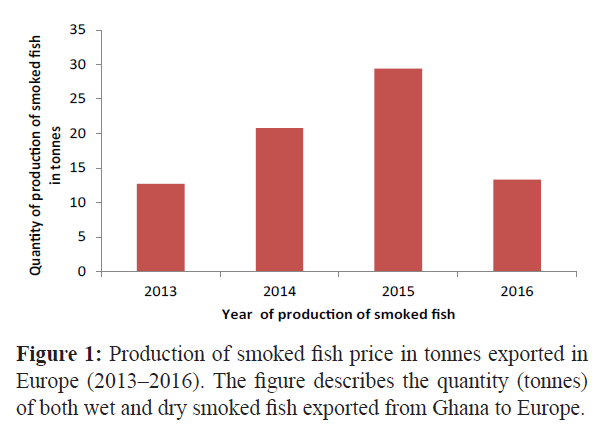
Figure 1:Production of smoked fish price in tonnes exported in Europe (2013–2016). The figure describes the quantity (tonnes) of both wet and dry smoked fish exported from Ghana to Europe.
`
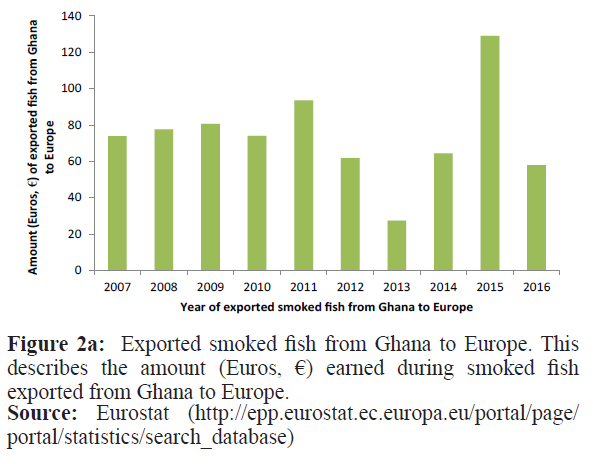
Figure 2a:Exported smoked fish from Ghana to Europe. This describes the amount (Euros, €) earned during smoked fish exported from Ghana to Europe.
Source: Eurostat (https://epp.eurostat.ec.europa.eu/portal/page/ portal/statistics/search_database)
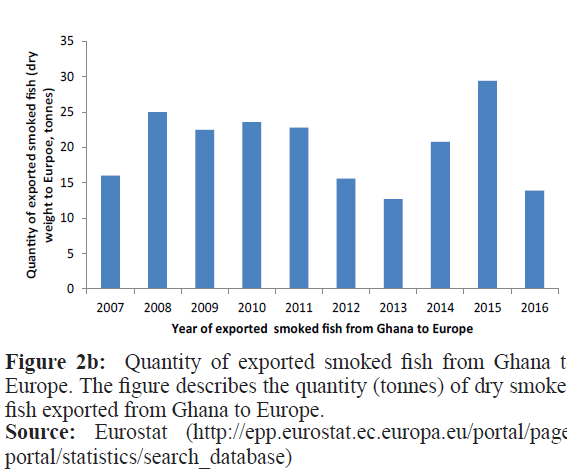
Figure 2b:Quantity of exported smoked fish from Ghana to Europe. The figure describes the quantity (tonnes) of dry smoked fish exported from Ghana to Europe.
Source: Eurostat (https://epp.eurostat.ec.europa.eu/portal/page/ portal/statistics/search_database)
Materials and Methods
Smoked fish technologies in Ghana
In Ghana, fish smoking is one of the most widely used traditional fish processing methods employed to preserve the vast quantities of fish landed in the season of glut. In Ghana, the enhancement of improved types of the conventional fish smoking ovens (smoking kiln) including chorkor smokers (Figure 3), oil drum ovens (Figures 4a and 4b) and acceptance of the upgraded smoking technologies in many fish communities have improved the fame of smoking particularly Morrison improved fish smoking particularly oven (Figures 5a and 5b) (Kagan, 1970:1969; Nerquaye-Tetteh, 1989). However, these ovens preserve large amounts of fish landed in the season of surplus. The technology and technique used in smoked fish processing in Ghana may differ from processor to processor because of the environment, materials involved and equipment used (Anon, 2007).
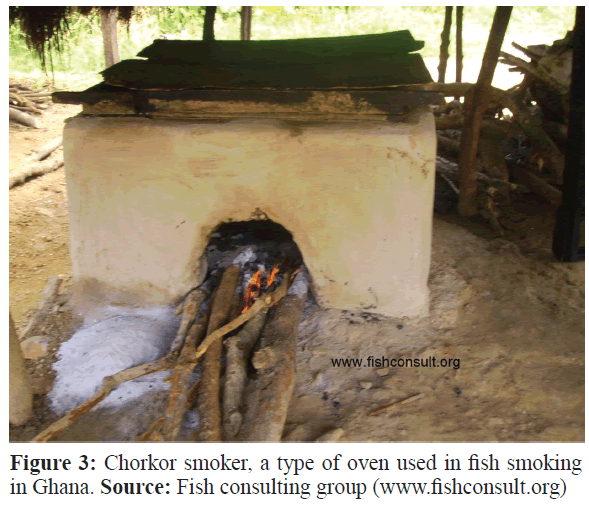
Figure 3:Chorkor smoker, a type of oven used in fish smoking in Ghana.
Source: Fish consulting group (www.fishconsult.org)
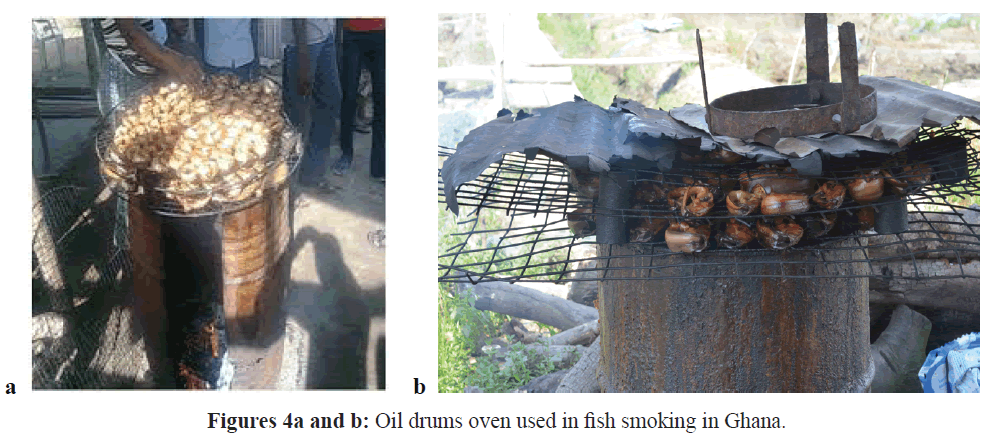
Figure 4a and b:Oil drums oven used in fish smoking in Ghana.
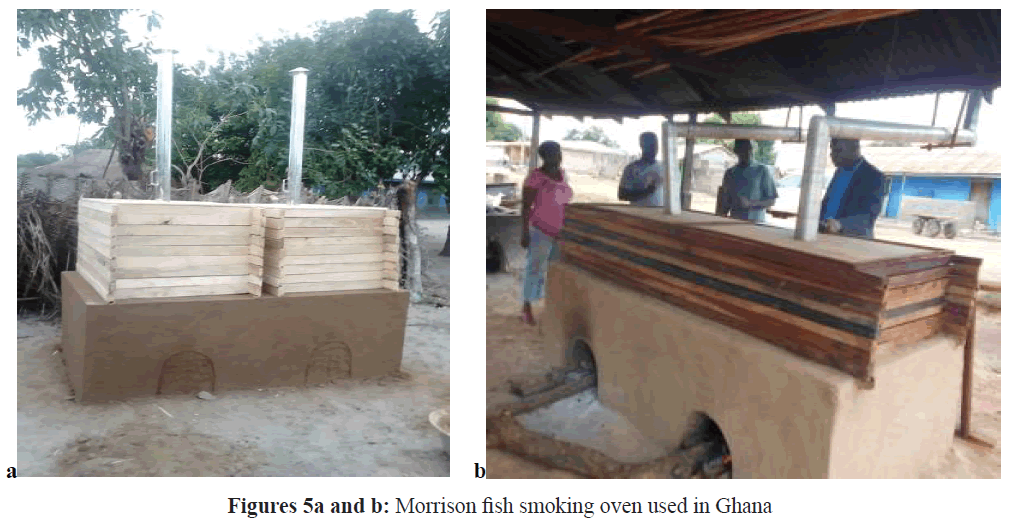
Figure 5a and b:Morrison fish smoking oven used in Ghana
Smoked fish processing in Ghana
In fish processing, the fuel wood used in smoking produces heat, the fires reduce the moisture content in the fish and contain chemicals which provide flavour, intensify the utilization of the fish and support its shelf life (Sirra, 2000). Fish smoking processing is based on the model, texture of the fish being smoked and based on consumers’ preferences (Figure 6). The smoked fish processes are of two forms which include wet hot smoked and dry hot smoked. With the wet hot smoked process, the shelf life is about three days and the duration of the overall smoking process is approximately two hours and the moisture content in term of percentage is 40%- 50%. The dry, hot smoked processes is characterized by having 9 months of shelf life, with duration of smoking lasting for about eighteen hours and moisture content is usually between 10%-15% (Anon, 2007).
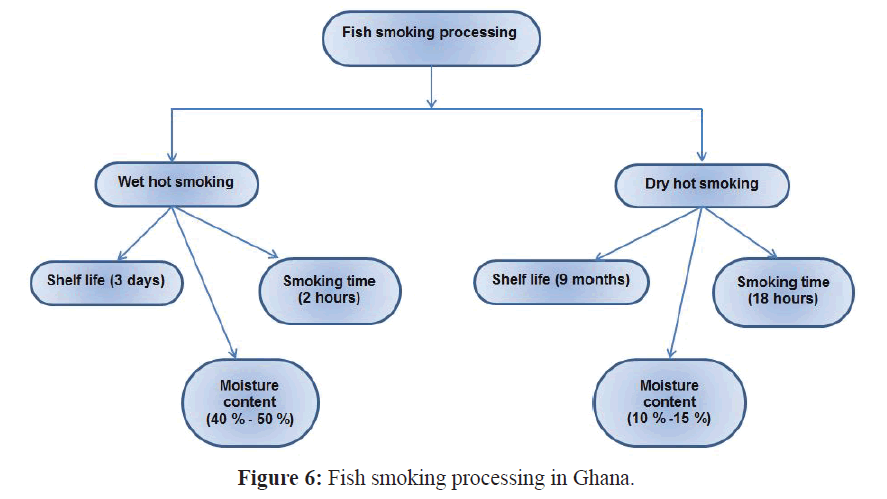
Figure 6:Fish smoking processing in Ghana.
Smoking of fish in Ghana
Hot smoking is the process of over smoldering wood, sawdust or other local sources of energy and using traditional kilns or round mud ovens with a single platform above the combustion chamber onto which a single layer of fish loaded are ready for smoking (Ako and Salihu, 2004). Also, a smoker oven locally called “Chorkor smoker” is made up of a 65 cm high rectangular burning chamber that is made up of burnt bricks with stock holes leading to fire pits and a set of framed wire mesh trays, which usually number to about 10 (Nti et al., 2002). However, rectangular plates comprise the smoking unit when stacked up on the oven, each loaded with one layer of fish (Nti et al., 2002). According to Hall (2011), in Ghana, the type of fish smoked as well as its uses, length of time for storage, and fish smoking process can utilize wet hot smoking or dry hot smoking.
For instance, mackerel as a marine fish are mostly wet hotsmoked fish takes 1-2 hours and yields a moist which is a multipurpose product of about 40-55% moisture contents with shelflife of 1-3 days under normal surrounding conditions (Hall, 2011; UNDP, 2001). Dry hot smoking is noted to last for about 10-18 hours or even a day but with 10-15% moisture content or below 10% (Hall, 2011; UNDP, 2001). According to Britwum (1993) dry, hot smoked fish can last almost a year and or 6 to 9 months (UNDP, 2001).
Stages of fish smoking
According to Anon, (2007), there are three stages of smoked fish processing which include the cooking stage, the drying stage, and the smoking stage. Firstly, at the cooking stage, the fish is cooked at a temperature of 63ºC. At this stage, there is enough heat produced to cook the fish for preservation and suitable for consumption. Secondly, at the drying stage, fire is set and generates heat enough to dry the fish (Figure 7). Finally, at the smoking stage, smoke is generated from the fuelwood and then used in smoking the fish which contain compounds that kill the bacteria on the fish (Anon, 2007). The smoke intensifies the colour of fish between the temperature of 54.4ºC and 60ºC as well as the fuelwood aids in preservation of the fish to enhance its shelf life (Anon, 2007).
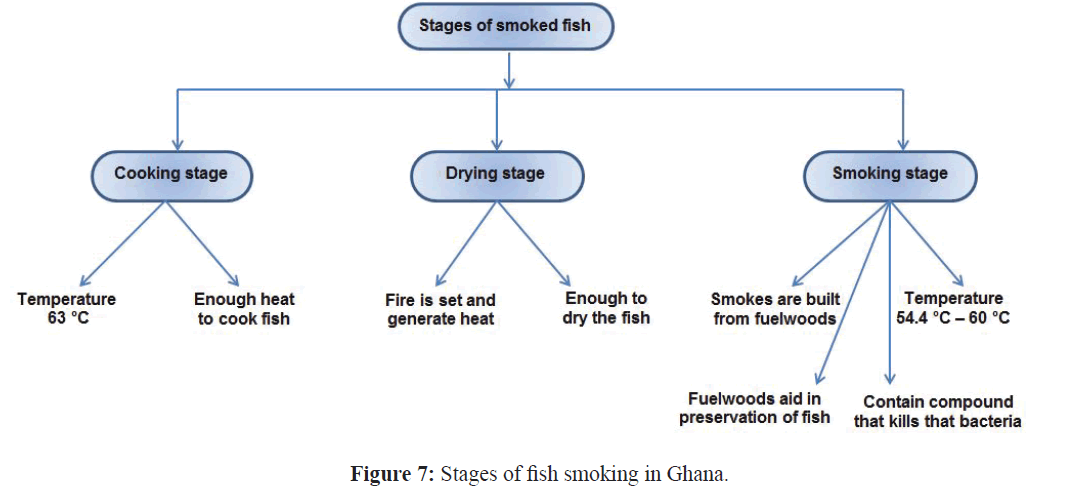
Figure 7:Stages of fish smoking in Ghana.
Traditional smoking method of fish in Ghana
In Ghana, traditional fish smoking (Figure 8) focuses on joint treatments of drying, smoking, and heat. For instance, fresh anchovies are spread out on smoking trays after washing but no salting or gutting and surface dried on the ground in the open air (Anon, 2007). Also, the loaded plates (Figure 9) are then stacked on the smoking ovens fired with fuel woods and smoked at temperatures that give a minimum temperature of 55°C-60°C but should not exceed a temperature of 120°C (Anon, 2007). After two to five hours, smoking period results in a dry smoked product with the moisture content of approximately ten percent (10%).
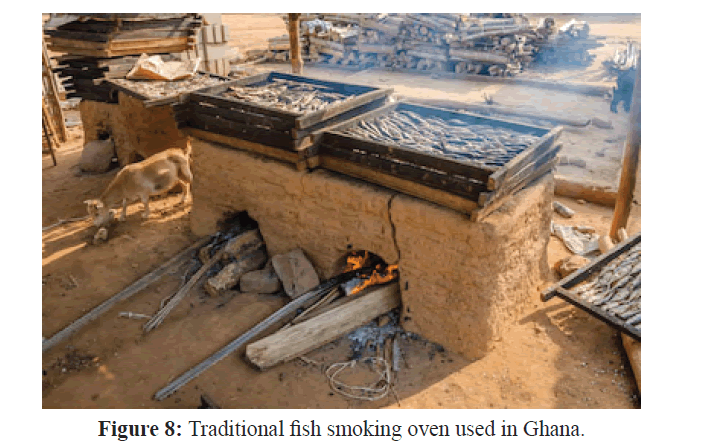
Figure 8:Traditional fish smoking oven used in Ghana.
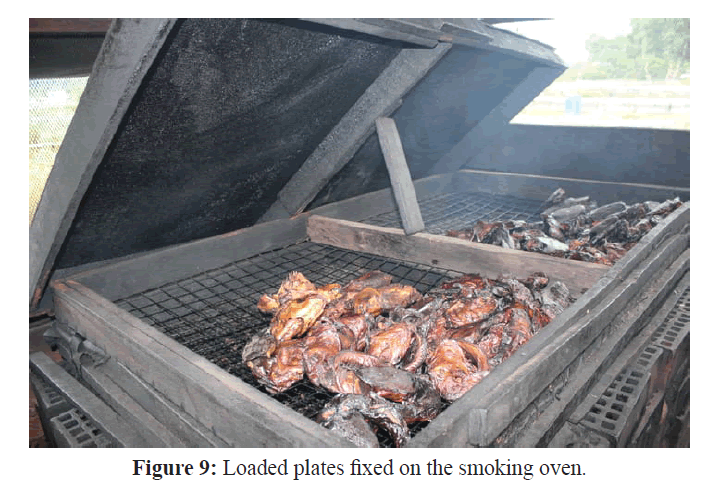
Figure 9:Loaded plates fixed on the smoking oven
For instance, the more prominent Sardinella spp are cleaned with water (fresh water which may or may not be portable, or sea water) and displayed on the smoking trays with surface dried in the sun (Anon, 2007). Moreover, loaded plates are fixed on the smoking oven and hot smoking commenced at a temperature of about 80°C for 2-5 hours before the second stage of processing at lower temperature less than 60°C, and lasting for as long as two days. The resulting smoked fish is dried up to a moisture content of between 10% and 15% (Anon, 2007).
Traditional storage method
Usually, in most fishing villages, the conventional round fish smoking oven is a widely used storage facility for smoked fish and additionally facilitates occasional re-smoking of the fish during storage (Anon, 2007). The smoked dried fish are packed in the oven, about 0.6 m above the combustion chamber, and covered with polyethylene sheets and jute sacks for protection. Re-smoking occur within l or 2 months intervals during the period of storage (Anon, 2007). Traditionally, a heap of large quantities of smoked fish are stored in special designed round oven storage structures, or a rectangular metal base structure. For each type of storage structure, several baskets full of dry-smoked fish are emptied into the structure and spread neatly until the base filled to over-flowing. After the bottom is filled with the smoked dried fish, brown papers are tied round with a rope and filled with more anchovies (Anon, 2007). A protective top cover completes the smoked fish structure (Figure 10). About five small baskets (with an open end diameter of 30 cm, the base diameter of 10 cm and 20 cm high) arranged upside down over the top of the stored fish. The whole structure is covered with a large sheet of thick black polyethylene. The baskets prevent the polyethylene cover from having direct contact with the fish.
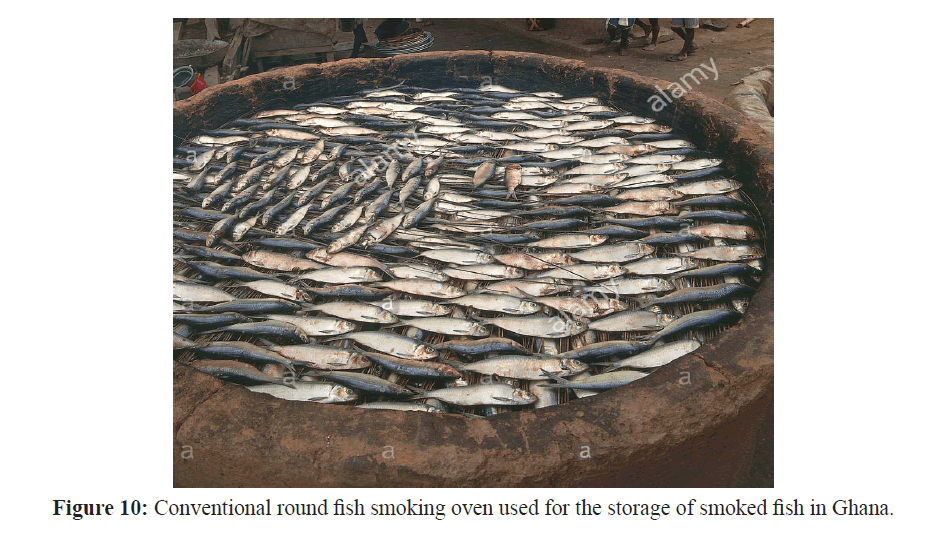
Figure 10:Conventional round fish smoking oven used for the storage of smoked fish in Ghana.
Hazards of Fish Smoking in Ghana
Microbial hazards related to smoked fish
Hot-smoked fish contain relatively heat-stable organisms such as Bacillus, Micrococcus, and Yeasts (Nickelson et al., 2001). The fish type determines the microbial quality and storage stability of smoked products, the variety of fish at smoking, salt content, smoking temperature, drying time and post-smoking storage conditions (Nickelson et al., 2001). In Ghana, 17 genera of bacteria including food pathogens have been isolated from smoked and sun-dried fish obtained from markets and feed-mills (Osei-Soumuah and Nartey, 1999). Nketsia-Tabiri et al., (2003) reported the presence of Escherichia coli, Staphylococcus spp, Enterobacter sakazakii, Klebsiella pneumonia ozaenae, Bacillus spp, and mycotoxin-producing Aspergillus spp and Penicillium spp found in smoked fish. Other studies have reported the presence of various spoilage and pathogenic bacteria in smoked fish (Nyarko et al., 2011; Plahar et al., 1999). Salmonella species are transmitted through the human/animal excreta found in reservoir (Shabarinath et al., 2007) and have been isolated from smoked fish in Ghana (Nyarko et al., 2011). However, it is worth noting that Salmonella species are unable to grow under desiccated conditions (Norhana et al., 2010). Experiments with naturally contaminated hot-smoked fish produced from fish with high levels of Colostrum botulinum show that toxin formed under the condition of temperature abuse (Ward, 2001).
Insect pest infestation
In Ghana, traditionally smoked-dried fish are stored in round smoking ovens and covered in polythene and jute sacks but occasionally, re-smoking is done to maintain dryness and ward insect pests and prevent mould attack (Anon, 2007). Blowfly infestation was identified as the primary cause of losses during processing and the early stages in cured fish (Yu, 1994). The flies lay their eggs in the wet flesh form before and during processing and the larvae stack on the fish until moisture inhibits their development (Yu, 1994). The flies are deterred from laying eggs during smoking; however, maggots present on the surface may penetrate the deeper regions of the fish and may survive in smoked fish that is not adequately heat-treated (Plahar et al., 1999). Blowflies are notorious carriers of diseases particularly cholera, diarrhea and dysentery in developing countries (Yu, 1994). The Demestes maculatus in smoke-dried fish are present during storage and marketing (Plahar et al., 1999).
Fish processing methods available to women groups
According to Okorley et al., (1998), in Africa, the main fish processing methods are smoking, salting, sun-drying, fermentation, grilling and frying. In Ghana, the major fishery products are closely related to the food habits. In fish processing, the processing methods used vary largely and are reliant on consumer perception, accessibility, and costs of the processing material, technical know-how, time needed for processing, the value of the end product, storage facilities, and marketability and seasonal fluctuations (Okorley et al., 1998).
In Ghana, the economic activities of the fish processing sector are dominated by women because of the low levels of income (Koranteng, 1993). Fish processed through drying can keep for some time and also helps to reduce moisture content in the fish so that it can be transported to small towns and villages. Furthermore, fish processed through smoking with fire or heat is useful to the fish to reduce the moisture content for easy storage of the fish (Okorley et al., 1998). Moreover, one of the fish processed in Ghana is salting. With this process, a large quantity of salt is added to the fish in a container or a solution of water; the salted fish are stored and transported. Another important fish processing is frying, and hot oil prepared and dip into the hot oil for frying (Okorley et al., 1998).
Fish are processed when the product cannot be sold fresh or when cold storage plants are not available or when the products are destined for foreign markets in extensive and semi-intensive production systems (Okorley et al., 1998). In the homes, salting, smoking, drying, and fermenting are performed by women and are considered as domestic activities. At home, women combine processing activities with other household duties while young girls assist their mothers in different methods of processing. The processed fish are kept in the house away from thieves and are sold to wholesale buyers in large quantities or sent to the markets for retail selling (Okorley et al., 1998).
However, an alternative means of employment for the young girls is the smoked fish sector because they had informal education and sometimes learn a trade while others young girls go into the smoked fish sector to support their parents or husbands and or for their personal upkeep (Brownell et al., 1983).
The Challenges Faced by Fish Processors during Smoking in Ghana
In Ghana, women involved in fish processors face significant challenges as well as fish processing that including small-scale, cooperative, or industrial levels. However, small-scale enterprises consider by the high amount of flexibility and accomplishment of retorting to the supply of fresh products and consumer favorites (Okorley et al., 1998). Although, processing enterprises operate on a small-scale basis and have significance to the economy. Women gain employment and income in the industry (Figure 11).
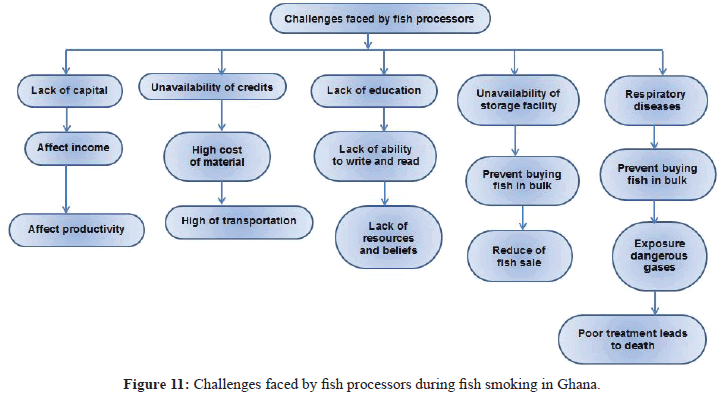
Figure 11:Challenges faced by fish processors during fish smoking in Ghana.
During these processes, women go through challenges. Okorley et al., (1998) reported that low capital is one of the fundamental problems women face in the fish process business because women do not have adequate financial resources to start the business which eventually, affects their income and the number of customers they can serve at a time.
Besides, unavailability of credits or loans for women due to the high level of risk associated with the business; most financial institutions do not want to give credits or loans to such individuals involved in the industry because of the high risk involved with fish processing business (Okorley et al., 1998). Also, the industry depends heavily on fuelwood; the resources become costly or scarce particularly in the rainy season where these women are largely affected. Moreover, women transport fuel from a far distance in the villages to the towns and cities and thus resulting in an increase their cost of production.
Thirdly, about 80% of women involved in the business do not have any formal education (Okorley et al., 1998). Whereas, their ability to read, write and calculate their business cash flow and also in most cases, they cannot take specific decisions on the business growth together are some of the challenges faced by these women. Even in the villages and towns, young ladies are not educated due to lack of resources, beliefs and values and have the perception that young men must be educated.
The unavailability of storage facilities prevents the women in purchasing a large amount of fish to enhance their marketing economies of scale and can help them to plan effectively. From the market, these women reduce the price of fish sent to the market when the smoked fish have not been sold completely before the day ends. Since they do not have storage facilities back home. These women are compelled to reduce the cost in order to sell everything at low revenue per production and processing costs (Okorley et al., 1998).
Lastly, women in fish processing are diagnosed with respiratory diseases. Some of the respiratory diseases include inhalation and exposure of carbon monoxide, and particulate matter and lung cancer. Some of the unhealthy conditions, the women encounter are headaches, dizziness, and drowsiness to nausea, vomiting or tightness which are signs of carbon monoxide exposure. Also, carbon monoxide causes neurological damage, coma and death. Fuller et al., (2013) reported that long-term exposure to fine particulate air pollution is a significant risk factor influencing cardiovascular disease mortality through mechanisms such as pulmonary and systemic inflammation, accelerated atherosclerosis and altered cardiac autonomic function. Women suffering from these diseases end up losing their lives.
Factors Affecting the Growth of Microorganisms in Food
Several factors encourage, prevent or limit the microbial growth in food including food nutrients, moisture content, water and pH.
Moisture content in food
The presence of water enhances microorganisms to produce food products. Generally, food microbiologists describe the water requirements of organisms in terms of water activity (aw) of the food or environment. Jay, (2000) defined water activity as the ratio of the pressure of the water vapour in the food substrate to the pure water vapor pressure at the same temperature. Optimum growth level of most microorganisms occurs at aw values 0.97- 0.99, which is found in fresh foods such as raw meat, vegetables, and fruits. Generally, microbes have optimum and minimum levels of aw for growth depending on other growth factors in their environments. According to (ICMSF, 1996), Salmonella spp has a minimum increase of aw of 0.94, optimum growth of 0.99 and maximum growth of aw value of > 0.99 while Shigella has a minimum increase of 0.97 aw.
Food nutrient
Most food contains sufficient nutrients to support microbial growth. These microorganisms grow to bring changes in the natural properties such as appearance, flavour, colour, taste, and odour of the contaminated food, thus causing spoilage (Lammerding and Paoli, 1999). Most bacteria prefer foods that have a high content of protein and moisture like meats, poultry, seafood, dairy products, cooked rice, beans, and potatoes.
Mostly, interior portions of meat are free of microbial contamination if healthy animals are appropriately slaughtered. Freshly cut meat gets immediately contaminated with microorganisms derived from gloves, hands, and implements used to reduce the meat, hides, hair, intestines of the animals and the environment of the slaughterhouse (Lammerding and Paoli, 1999).
pH
It’s known that groups of microorganisms have pH minimum, optimum, and maximum for growth in foods. In the inhibition of growth in pathogens and other organisms, pH interacts with factors such as aw, salt, temperature, redox potential, and preservatives. Reduction in pH makes the microbes inactive due to low heat (Mossel et al., 1995). The pH affects the growth of microorganisms in food, most spoilage organisms prefer a pH in the slightly acidic to neutral ranges but although proteolytic bacteria thrive in alkaline environments. By adjusting the pH, the spoilage can achieve with a higher degree of protection from deterioration (Kuntz, 2004).
Temperature
Temperature values for microbial growth like pH values have a minimum and maximum range with an optimum temperature for microbial growth. Lowering temperatures result in a slowdown in the growth of organisms. Temperature below freezing stops the growth of most organisms. Frost can be lethal to some microorganisms by the formation of ice crystals (Kuntz, 2004).
Preservation against microbial hazards
Generally, the preservation effects of smoking are attributed to several antimicrobial and antioxidant substances which can effectively inhibit microorganisms, limit adverse enzymatic and oxidative reactions, especially in combination with the hightemperature application (Horner, 1997). Contact and embedding of phenolic compounds are generated from burning wood, combined with the temperature and conditions of smoking reduce microbiological development and oxidation and provide longer shelf-life (Efiuvwevwere and Ajiboye, 1996; Ravishankar and Juneja, 2000). The effective heat treatmentreduce aw sufficiently to inhibit the survival and growth of spoilage and pathogenic bacteria (Vandenbergh, 1993). Moreover, heat generated during hot smoking accelerates the drying process by reducing moisture content, lowering the pH and destroying microbes thus ensuring shelf-stable intermediate moisture products (Horner, 1997; Nickelson et al., 2001; Abolagba and Melle, 2008; Sengor et al., 2004)). Also, smoking is responsible for significant modification of the organoleptic properties of fish (Kjällstrand and Petersson, 2001) including taste, odour, coloration, and flavour (Horner, 1997; Sengor et al., 2004; Abolagba and Melle, 2008).
An Overview on Benefits of Fish Industry in Ghana
Foreign exchange earning
Ghana earned foreign exchange in exportation processed fish. Fish exports from Ghana include tuna (whole and canned), frozen fish (commonly demersal species), shrimps, lobsters, cuttlefish and dried and smoked fish (FAO, 2017). Smoked fish, and other processed fish products are exported to mainly EU countries mainly including Spain, Portugal and Greece, and USA and Japan (FAO, 2017). Figure 2a indicate the trend of foreign exchange earned and amount (EUR, €) involved from European countries.
Food security
Interestingly, fish are consumed by both the poor and the rich, and in both rural and urban areas; making fish as an important source of animal protein. Fish provide Ghanaians 60% of their animal protein requirements. The availability of fish is in different forms including fresh, smoke-salted, dried, salted and dried, canned, fried or grilled. In 1882 and 1997, Ghana’s per capita fish was 20.3 kg and 34.2 kg respectively indicating the lowest and highest of consumption (FAO, 2017). Currently, Ghana’s per capita fish is 28 kg which exceed that of Africa’s and world’s per capita fish are 10.5 kg and 18.9 kg respectively (FAO, 2017). Ghana’s fish consumption requirement is about 720, 000 metric tonnes but annually fish supply stands at 400,000 tonnes (FAO, 2017). Annually, Ghana’s deficit indicates 320,000 metric tonnes of fish and fishery products. Nevertheless, Ghana produced smoked fish to Europe as illustrated in Figure 1.
Employment and rural development
The importance of the fisheries sector to Ghana’s economy is manifest in key economic indices such as employment, livelihood support, poverty reduction and food security, mostly in rural fishing communities (FAO, 2017). Importantly, the sector focuses on the gender perspective, since it provides employment to a large group of women as well as men. Moreover, the main activity of fishing, other opportunities for value-addition that create employment, generate income and contribute towards Ghana’s rural development, include fish processing, such as frying, salting and smoking (FAO, 2017). In the fisheries sector, over 2 million Ghanaians are dependent for their livelihoods of which 135 000 fishers are in the marine sector, 124 000 (or 92%) are artisanal fishers (FAO, 2017). Lake Volta provides livelihood for about 300 000 inhabitants in the riparian area. In the marine capture fisheries, 135, 000 fishers which 2.6 million people depend on the fishers which include spouses, children and relatives. About 500, 000 individuals engage in the processing and distribution for livelihood (FAO, 2017). In addition, 300, 000 individuals depend directly on Lake Volta for livelihood out of which 80, 000 are fishers and rest are traders, fish processors and many more (FAO, 2017).
Conclusion and Future Perspectives
In conclusion, Ghana’s fisheries sector contributes to the nation GDP by a value of 4.5% as well as 12% to the agriculture sector. Also, the fishing industry comprises the marine sector, freshwater sector, and coastal lagoons. The industrial, semi-industrial and artisanal sub-sectors are the primary fishing operations in Ghana. Ghana`s natural water`s harbour a total of 485 fish species. In the coastal waters, 347 fish species could be found representing about 72% and belong to 82 families of captured fishery resources.
Smoking is one of the widely used fish processing method used in Ghana for used in the preservation and processing of fish. The technologies used in Ghana are improved types of conventional fish smoking ovens, chorker smokers, oil drums and acceptance of the upgraded smoking techniques. Women and young girls dominate fish processing activities. Mainly, fish processing activities are done around and along the coastal waters and river banks. The two forms of smoking fish in Ghana are; wet hot smoking and dry, hot smoking. In Ghana, the fish species that are usually smoked are catfish, herring, mackerel, anchovy, and tuna. There are three stages of smoking fish which include; cooking stage, the drying stage, and the smoking stage. Also, the smoked fish stored in empty baskets laid inside with brown papers and covered with brown papers. In the traditional storage, temperature helps the stored smoked fish in using the conventional storage structures while the humidity determines the amount of moisture in the smoked fish.
Women are involved in fish processing which includes drying, smoking, salting, and frying. Also, these women also face numerous challenges such as lack of formal education, unavailability of credits, low capital and are prone to respiratory diseases. The presence of Escherichia coli, Staphylococcus spp, Enterobacter sakazakii, Klebsiella pneumonia, Bacillus spp, and mycotoxin-producing Aspergillus spp and Penicillium spp found in smoked fish. Also, pest infestation affects stored smoked fish in the storage structures.
The presence of moisture, food nutrient, pH and temperature are factors that affect the growth of microorganisms in food (smoked food). In Ghana, the fisheries sector also plays a significant role in poverty alleviation. Many women and vulnerable Ghanaian young girls depend on fisheries either directly or indirectly for their livelihoods.
The review provides an in-depth insight in fish smoking processing specifically in Ghana. It harnesses the methods used in smoking, the challenges faced in the smoking of fish and few techniques and technologies on fish smoking. Fish smoking help reduce post-harvest losses
More research studies must be carried out on the significance of fish smoking techniques and processing. These research studies will provide ideas, ways and improve the production of smoked fish. Thus aquaculture scientists need to help bring out new technologies and techniques involved in fish smoking.
Also, involvement of young girls must be checked because of the many risks associated with the fish smoking industry. Governments and stakeholders must create the environment where men are motivated to engage themselves in this business to further enhance and increase the productivity of the fishing industries.
Governments and stakeholders must provide flexible loans or credits and some incentives to the people involved in the industry. Government should equip fishing communities with tools and know-how to dry and smoke fish to provide eco-friendly environment.
Government must ensure regeneration and replantation of mangrove forests. This will check the current pressure placed on the limited wood resources and thus will eventually the rates of deforestation of mangrove forest as a result of the activities of the fish smoking.
Acknowledgments
The review article has no conflict of interest. The study was supported by National Natural Science Foundation of China as the funder and the award number is 31572651.
24561
References
- Aberoumand, A. (2010) Estimation of microbiological variations in minced lean fish products. World J. Fish and Marine Sci 2(3), 204-207.
- Abolagba, O.J., Melle, O.O. (2008) Chemical Composition and Keeping Qualities of a Scaly Fish Tilapia (Oreochromis niloticus) Smoked with Two Energy Sources. Afr J Gen Agric 4(2), 113-117.
- Akinwumi, F.O. (2014) Effects of Smoking and Freezing on the Nutritive Value of African Mud Catfish, Clarias gariepinus Burchell, 1822. J Agri Sci 6(11), 143-149.
- Akinwumi, F.O., Adegbehingbe, K.T. (2015) Microbiological Analysis of Three of Smoked Fish Obtained from the Ondo State, Nigeria. Food and Public Health 5(4), 122-126.
- Akoachere, J., Bughe, R.N., Oben, B.O., Ndip, L.M., Ndip, R.N. (2009) Phenotypic characterization of human pathogenic bacteria in fish from the coastal waters of South West Cameroon: Public health implications. Rev Environ Health 24(2), 147-156.
- Alhassan, E., Boateng, V., Ndaigo, C. (2014) Smoked and frozen fish consumption and marketing channels in the Tamale Metropolis of Ghana. Ghana Journal of Development Studies 9(1), 21.
- Anon. (2007). “A summary of fisheries statistics in Ghana” (mimeo) Directorate of Fisheries, Marine Fisheries Research Division, Ministry of Fisheries Accra. pp:2.
- Asiedu, B., Failler, P., Beygens, Y. (2018) Ensuring food security : an analysis of the industrial smoking fishery sector of Ghana. Agric Food Secur 7, 1-11.
- Asiedu, M., Sanni, A.I. (2002) Chemical composition and microbiological changes during spontaneous and starter culture fermentation of Enam Ne-Setaakye, a West African fermented fish-carbohydrate product. Euro Food Res Tech 215(1), 8-12.
- Britwum, A.O. (1993) The Impact of Women and Development Projects on the Status of Rural Women Within their Families. Mphil dissertation, University of Ghana, Legon.
- Brownell, B., Nerquaye-Tetteh, G., Lopez, J., Thompson, A. (1983) “A practical guide to improved fish smoking in West Africa”. New York, USA: UNICEF.
- Clover, C. (2005) The End of the Line: How Overfishing is changing the World and what we can eat. London, UK: Edbury Press.
- Clucas, I.J. (1982) Fish handling, preservation and processing in the tropics. Report, Part 2. Rome, Italy.
- Clucas, I.J., Ward, A.R. (1996) Post-Harvest Fisheries Development: a guide to Handling/Preservation, Processing and Quality. Natural Resource Institute. Chatham, UK.
- Efiuvwevwere, B.J., Ajiboye, M. (1996) Control of microbiological quality and shelf-life of catfish (Clarias gariepinus) by chemical preservatives and smoking. J Appl Bacteriol 80, 465-470.
- Essuman, K.F. (1992) A study on processing, marketing and consumption of cured fish West Africa: Fermented fish in Africa”.
- FAO. (2017) Fisheries and Aquaculture Department. Fishery and Aquaculture Country Profiles
- Fuller, C.H., Patton, A.P., Lane, K., Laws, M.B., Marden, A., et al. (2013) A community participatory study of cardiovascular health and exposure to near-highway air pollution: study design and methods. Rev Environ Health 28(1), 21-35.
- Garrow, J.S., James, W.P.T. (1994) Human Nutrition and Dietetics. London, UK: Churchill Livingstone.
- Hall, R.E. (2011) The High Sensitivity of Economic Activity to Financial Frictions. Econ J 121(552), 351-378.
- Horner, W.F.A. (1997) Preservation of fish by curing (drying, salting and smoking). G.M. Hall, Fish Processing Technology. London.
- ICMSF (1996) Microorganisms in Foods, Sampling for Microbiological Analysis. Principles and Specifications, International Commission on Microbiological Specification for Food (2nd Edition). Oxford: Blackwell Science.
- Iqbal, Z., Sheikh, U., Mughal, R. (2012) Fungal infections in some economically important freshwater fishes. Pakistan Vet J 32(3), 422-426.
- Jay, J.M. (2000) Modern food microbiology. (6th Edition) Gaithersburg, Aspen.
- Kagan, B. (1969) The Advantage of Using Framed Wire Nets in Fish Smoking. Rome, Italy: FAO Publications, Food and Agriculture Organization of the United Nations.
- Kagan, B. (1970). Fish Price sing in Ghana: Possibilities of Improving Traditional Processing. Food and Agriculture Organization of the United Nations, Rome: FAO Publication AGS, SG/GIIA.
- Kjällstrand, J., Petersson, G. (2001) Phenolic antioxidants in alder smoke during industrial meat curing. Food Chem 74(1), 85-89.
- Koranteng, K.A. (1993) Marine fishery resources of Ghana’s coastal zone. Structure and dynamics of demersal assemblages on the continental shelf and upper slope of Ghana, West Africa. Marine Ecology Progress Series.
- Kuntz, L.A. (2004) Keeping Microorganism in Control, Food Product Design. British Food J 103(4), 238-252.
- Lammerding, A., Paoli, M. (1999) Quantities Risk Assessment: an Emerging Tool for Emerging food Borne Pathogens. Ottawa, Canada.
- Maddison, A., Machell, K., Adams, L. (1993) Fish processing: Food Cycle Technology Source Books. UK Publications, International Technology, London.
- Mossel, D.A.A., Corry, J.E.L., Struijk, C.B. (1995) Essentials of the microbiology of foods: a textbook for advanced studies. John Wiley and Sons, Chichester, England.
- Nerquaye-Tetteh, G.A. (1989) Extension of research results to end-users: success stories and failures - a case of the FAO/Chorkor smoker. FRI Project Report. Accra, Ghana.
- Nickelson, R.I., McCarthy, S., Finne, G. (2001) Fish, crustaceans, and precooked seafoods. In F.P. Downes & K. Ito, in Compendium of Methods for the Microbiological Examination of Foods. American Public Health Association, Washington DC pp: 497-505.
- Nketsia-Tabiri, J., Adu-Gyamfi, A., Montford, K.G., Gbedemah, C.M., Sefa-Dedeh, S. (2003) Optimizing processing conditions for irradiated cured fish. International Atomic Energy Agency Technical Document 1337, 207-216.
- Norhana, M.N., Poole, S.E., Deeth, H.C., Dykes, G.A. (2010) The effects of temperature, chlorine, and acids on the survival of Listeria and Salmonella strains associated with uncooked shrimp carapace and cooked shrimp flesh. Food Microbiol 27, 250-256.
- Novotny, L., Dvorska, L., Lorencova, A., Beran, V., Pavlik, I. (2004) Fish: a potential source of bacterial pathogens for human beings – Czech. Vet Med 49(9), 343-358.
- Nti, C.A., Plahar, W.A., Larweh, P.M. (2002) Impact of adoption in Ghana of an improved fish processing technology on household income, health and nutrition. Int J Consum Stud 26(2), 102-108.
- Nyarko, E., Botwe, B., Ansong, J., Delfanti, R., Barsanti, M., et al. (2011) Determination of 210Pb, 226Ra and 137Cs in beach sands along the coastline of Ghana. Afr J Environ Sci Technol 9, 17-23.
- Okorley, E.L., Zinnah, M.M., Mensah, A.O., Owens, M. (1998) Women and Agro- processing in Ghana: A Case Study of the State of Women in Fish smoking in the Central Region of Ghana.
- Olokor, J.O., Ihuahi, J.A., Omojono, F.S., Adelomo, E.O. (2007) Handbook of Practical Fisheries Technology Division, National Institute of Freshwater Fisheries Research (NIFFR).Remi-Thomas Press, New-Bussa, Niger State, Nigeria.
- Orraca-Tetteh, R., Nyanteng, V.K. (1971) Consumer attitude to fish in Ghana. In FAO contract report. Food and Agriculture Organization. Rome, Italy.
- Osei-Soumuah, A., Nartey, P.W. (1999) Microbial flora of Anchovis sps used in poultry and livestock feed preparation in Ghana. Council for Scientific and Industrial Research, Institute for Scientific and Technological Information (CSIR-INSTI).
- Plahar, W.A., Nerquaye-Tetteh, G.A., Annan, N.T. (1999) Development of an integrated quality assurance system for the traditional sardinella sp and anchovy fish smoking industry in Ghana. Food Control 10(1), 15-25.
- Plahar, W.A., Nti, C.A., Steiner-Asiedu, M. (1995) Studies on fish consumption patterns in the southern sector of Ghana and the effect of handling on quality at household level. A Project Report submitted under the Ghana/Netherlands Regional Artisanal Fish Processing and Applied Research Project. Accra, Ghana.
- Plahar, W.A., Nti, C.A., Steiner-Asiedu, M. (1996) Studies on fish consumption patterns and fish quality at household level in the middle belt districts of Ghana. A Project Report submitted under the Ghana/Netherlands Regional Artisanal Fish Processing and Applied Research Project. Accra, Ghana.
- Plahar, W.A., Nti, C.A., Steiner-Asiedu, M. (1997) Studies on fish consumption patterns and fish quality at household level in the northern sector districts of Ghana. A Project Report submitted under Applied Research Project. Accra, Ghana.
- Ravishankar, R., Juneja, V.K. (2000) Sodium Chloride: Natural Food Antimicrobial Systems.CRC Press, Boca Raton, Florida.
- Sengor, G.F., Kalafatoglu, H., Gun, H. (2004) The Determination of Microbial Flora, water activity and chemical analysis in smoked mussels (Mytilus galloprivinciali s L.). Turk J Vit Anim Sci 28, 793-797.
- Shabarinath, S., Sanath, K.H., Khushiramani, R., Karunasagar, I., Karunasagar, I. (2007) Detection and characterization of Salmonella associated with tropical seafood. Int J Food Microbiol 114, 227-233.
- Sirra, E.N. (2000) Traditional fish processing and marketing of the Gambia. Final Project, Fisheries Department, The United Nations University, Iceland.
- Sowumi, A.A. (2007) Fin-fishes in Yoruba national healing practices from South West Nigeria. J Ethno-Pharmacology 113(2), 72-78.
- Vandenbergh, P.A. (1993) Lactic acid bacteria, their metabolic products and interference with microbial growth. FEMS Microbiol Rev 12(1-3), 221-237.
- Yu, B.P. (1994) Cellular defenses against damage from reactive oxygen species. Physiol Rev 74(1), 139-162.


















